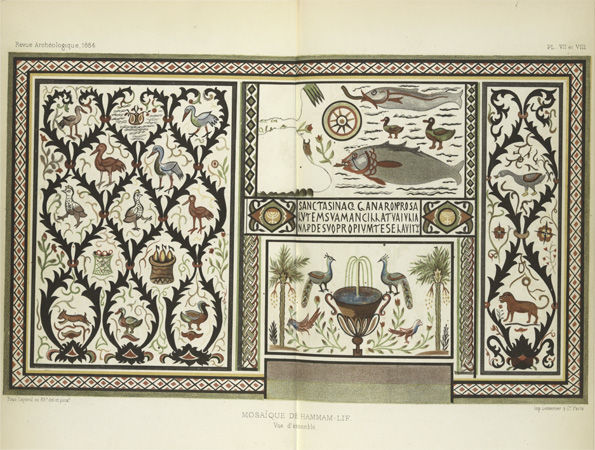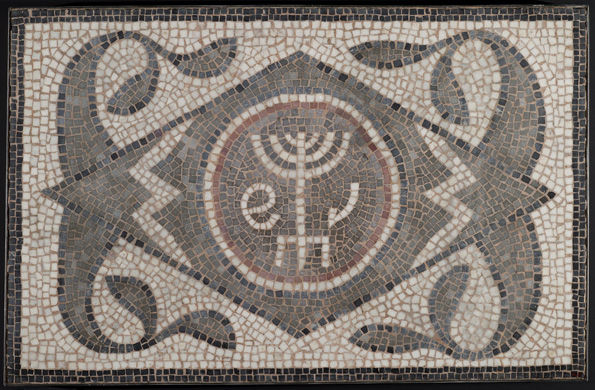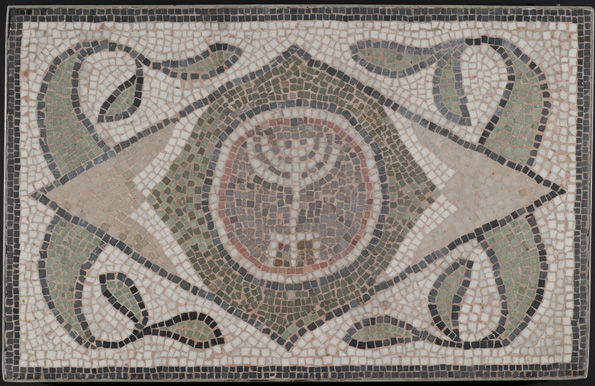Drawing of the floor of Hammam Lif Synagogue, from Revue archéologique; ou, Recueil des documents et des mémoires relatifs à l'étude des monuments, à la numismatique et à la philologie de l'Antiquité et du Moyen Age, The Metropolitan Museum of Art, Watson Library 505 R32 series 3, vol 3 Jan-Jun 1884 plate VII and VIII
In the late nineteenth century, French soldiers stationed at the town of Hammam Lif—the ancient city of Naro in southern Tunisia—accidentally rediscovered an ancient structure. The building's layout and floor mosaics were so in line with regional conventions that it was at first thought to have been a church. However, the Latin inscription in the center of the mosaic floor, which identifies the building as "Sancta Sinagoga" and is flanked by menorahs on either side, revealed the site to be a synagogue.
Mosaic of Menorah with Lulav and Ethrog, 6th century. Made in Tunisia, excavated Hammam Lif Synagogue. Brooklyn Museum, New York, Museum Collection Fund (05.26)
Today, we often associate menorahs with Hannukah, but in the Byzantine world, images of the menorah, many accompanied by the lulav and ethrog related to the holiday of Sukkot, were often what differentiated a synagogue from a Christian church or a polytheistic house of worship. Patterned after the great golden menorah that once inhabited the Temple in Jerusalem, these menorahs had seven branches (unlike the menorahs used on Hannukah, which have nine), and are featured in Jewish depictions from Spain to the Middle East.
Mosaic of Menorah, 6th century. Made in Tunisia, excavated Hammam Lif Synagogue. Brooklyn Museum, New York, Museum Collection Fund (05.27)
The Byzantine period saw an expansion of Jewish diaspora communities, and by the dawn of the Islamic period, most Jews lived outside the holy land. Some accounts place Jews in Tunisia as far back as the sixth century B.C., and Jewish communities are known to have flourished there since Roman times. Jews in North Africa engaged primarily in agriculture and trade, and Tunisia continued to serve as an important center of Jewish life throughout the early Islamic period.
The Hammam Lif Synagogue is the most extensive Jewish archaeological site of the Byzantine period in North Africa, and presents a fascinating synthesis of traditional Jewish images and forms with local imagery and architecture.


